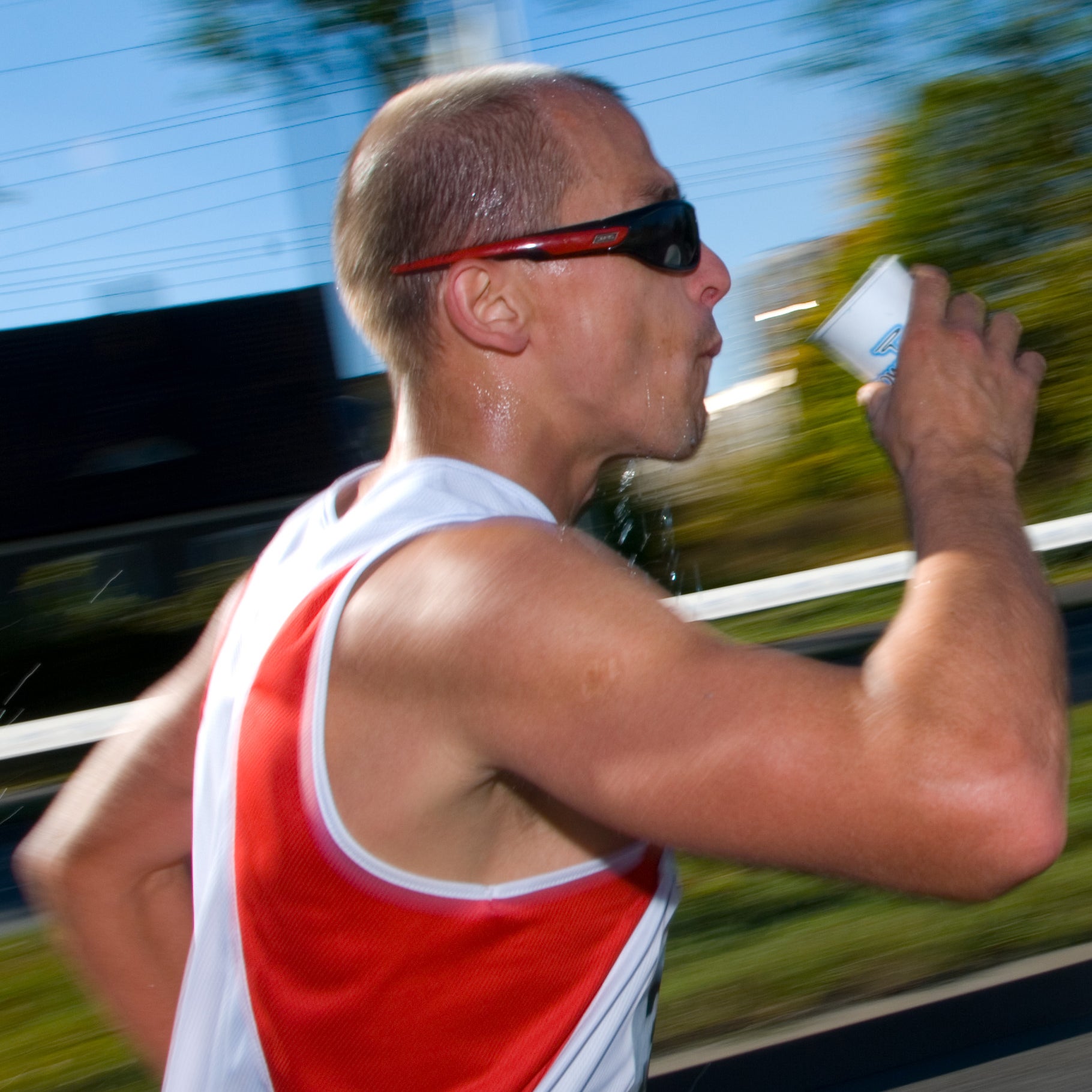Ever chug a can of let’s say, Brand E, energy drink and not only feel that good-as-advertised jolt of extraness but experience a skip or two in your chest as well? Even though most of the evidence is anecdotal and the studies—which continue to pile up—don’t yet know exactly why, the link between energy drinks and a racing heart (or worse) seem pretty incontrovertible.
The latest report to make this connection concluded that energy drinks can cause “angina, cardiac arrhythmia (irregular heartbeat) and even sudden death.” This finding confirms that of a similar report from a year ago—and confirms some people’s popular conceptions (or misconceptions) that energy drinks should be imbibed with caution—and most probably in moderation, and almost definitely not right before or during any sort of trying physical activity.
“Most ‘energy drinks’ have contents that can be good or bad, depending upon the dose—sugar, caffeine, and taurine,” says Dr. Kim Williams, chief of cardiology at Chicago’s Rush University Medical Center. “At this time, though, there is no definitive way of determining which if any ingredient is the most harmful or under what circumstances.”
But with over 30 deaths allegedly related to consumption of energy drinks, adds Dr. Williams, “these incidents suggest that the ingredients, alone or in combination, may not be safe for all consumers if taken in large quantities, quickly, or if combined with alcohol or exercise in a heated environment.”��
Most of Williams’ colleagues agree. Last year, for instance, The American Medical Association’s house of delegates voted to ban sales of energy drinks to those under age 18, suspecting that the high caffeine levels were harmful. Partly in response, no doubt, to the news that hospitalizations associated with energy drinks doubled from 2007-11, hitting 20,000, according to a report from the Substance Abuse and Mental Health Services Association.
“We don’t have enough data to conclusively state what in energy drinks may pose an increased cardiovascular or other risk,” says Sachin Shah, associate professor of pharmacy at the University of the Pacific. “It does seem that the adverse effects are more prominent in those consuming multiple beverages—high volumes—or in combination with other drugs of abuse.”
Banned in France, Norway, and Denmark, and considered a prescription drug in Sweden, energy drinks appear to have been unleashed on U.S. consumers before an adequate number of studies could gauge all their possible effects. Particularly when individuals drink more than they should (which is, of course, vague—and problematic when no one has established exactly how much is too much).
Most contain caffeine (source of all that “energy”) and while ingesting up to 400 milligrams a day is generally considered safe, there’s really no cutoff point for ingredients like taurine, which is also in most of these drinks.
Basically, more data is needed. “So for now,” says Shah, “I tell my friends to limit their use to when necessary only, not to drink high volumes of it, not to confuse them as sports or electrolyte replacement beverages, and to stay away from them if having any underlying cardiac conditions.”
The latest report to make this connection concluded that ” This finding confirms that of a, and reaffirms that energy drinks should be imbibed with caution—and most probably in moderation, and almost definitely not right before or during any sort of trying physical activity.
“Most ‘energy drinks’ have contents that can be good or bad, depending upon the dose—sugar, caffeine, and taurine,” says Dr. Kim Williams, chief of cardiology at Chicago’s Rush University Medical Center. “At this time, though, there is no definitive way of determining which if any ingredient is the most harmful or under what circumstances.”
But with over 30 deaths allegedly related to consumption of energy drinks, adds Dr. Williams, “these incidents suggest that the ingredients, alone or in combination, may not be safe for all consumers if taken in large quantities, quickly, or if combined with alcohol or exercise in a heated environment.”
��
Most of Williams’ colleagues agree. Last year, for instance, The American Medical Association’s house of delegates voted to ban sales of energy drinks to those under age 18, suspecting that the high caffeine levels were harmful. Partly in response, no doubt, to the news that hospitalizations associated with energy drinks doubled from 2007-11, hitting 20,000, according to a report from the Substance Abuse and Mental Health Services Association.
“We don’t have enough data to conclusively state what in energy drinks may pose an increased cardiovascular or other risk,” says Sachin Shah, associate professor of pharmacy at the University of the Pacific. “It does seem that the adverse effects are more prominent in those consuming multiple beverages—high volumes—or in combination with other drugs of abuse.”
Banned in France, Norway, and Denmark, and considered a prescription drug in Sweden, energy drinks appear to have been unleashed on U.S. consumers before an adequate number of studies could gauge all their possible effects. While ingesting up to 400 milligrams of caffeine a day is generally considered safe, there’s no accepted cutoff point for common ingredients like taurine.
Basically, more data is needed. “So for now,” says Shah, “I tell my friends to limit their use to when necessary only, not to drink high volumes of it, not to confuse them as sports or electrolyte replacement beverages, and to stay away from them if having any underlying cardiac conditions.”


